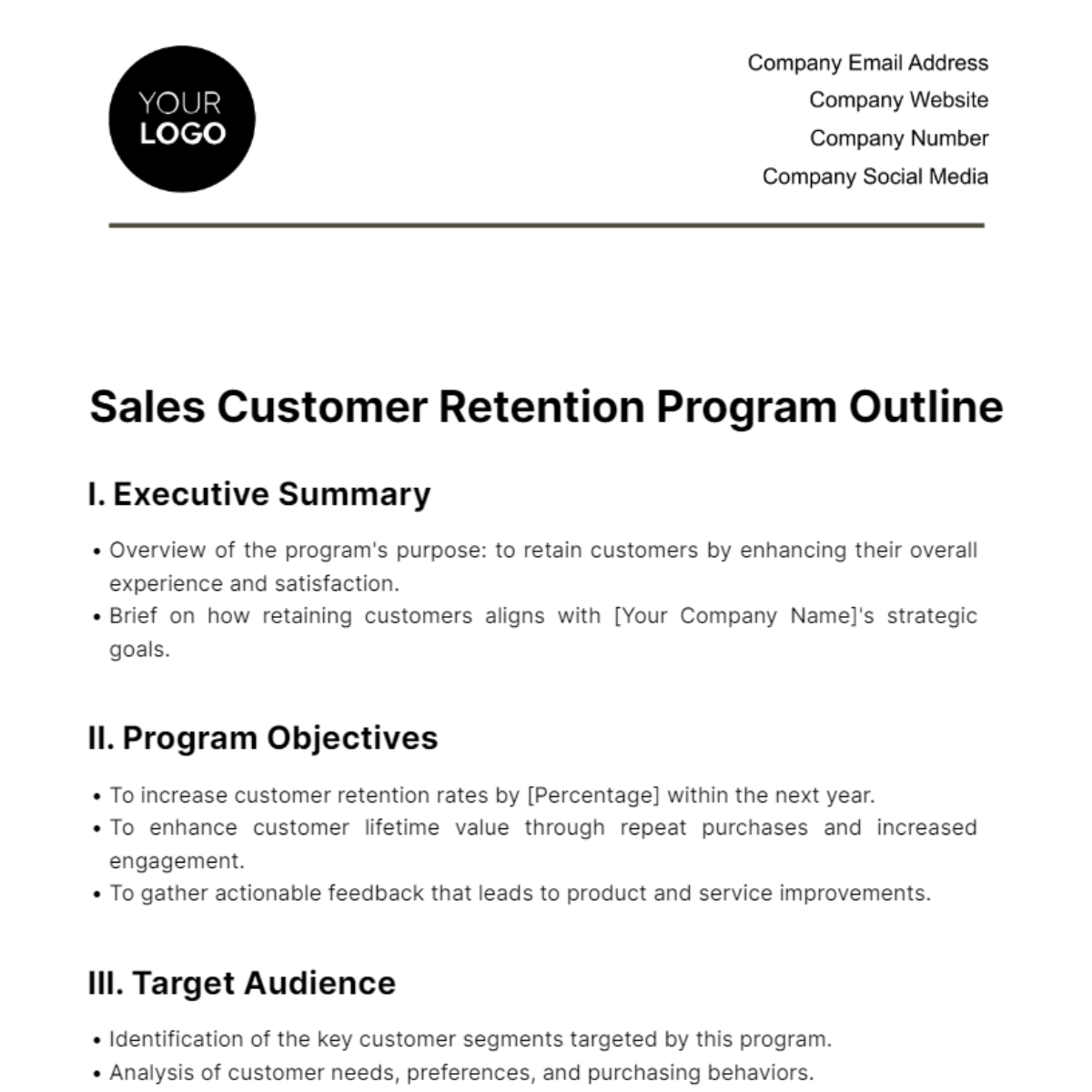Sales Customer Retention Program Outline
I. Executive Summary
II. Program Objectives
To increase customer retention rates by [Percentage] within the next year.
To enhance customer lifetime value through repeat purchases and increased engagement.
To gather actionable feedback that leads to product and service improvements.
III. Target Audience
Identification of the key customer segments targeted by this program.
Analysis of customer needs, preferences, and purchasing behaviors.
IV. Program Components
A. Personalization Strategies
Customer Segmentation: Tailoring communication and offers based on customer behavior, purchase history, and preferences.
Customized Communications: Personalized emails, messages, and calls to make customers feel valued.
B. Rewards and Incentives
Loyalty Program: Points-based or tiered rewards for repeat purchases or referrals.
Exclusive Offers: Special discounts, early access to new products, or members-only events.
C. Engagement and Relationship Building
D. Feedback Loop
V. Implementation Plan
VI. Communication Strategy
Channels and methods for communicating with customers about the program (e.g., email, social media, in-app notifications).
Content strategy for engaging and informative communication.
VII. Technology and Resources
Overview of the CRM and other tools required to support personalized communication, data analysis, and program management.
Budget allocation for rewards, incentives, and program marketing.
VIII. Monitoring and Evaluation
Key performance indicators (KPIs) to measure the program's success (e.g., retention rate, customer lifetime value, satisfaction scores).
Schedule for regular reviews and adjustments to the program based on performance data.
IX. Conclusion
X. Appendices
Detailed descriptions of the loyalty program structure.
Examples of personalized communication templates.
Survey and feedback form samples.
Sales Templates @ Template.net






























